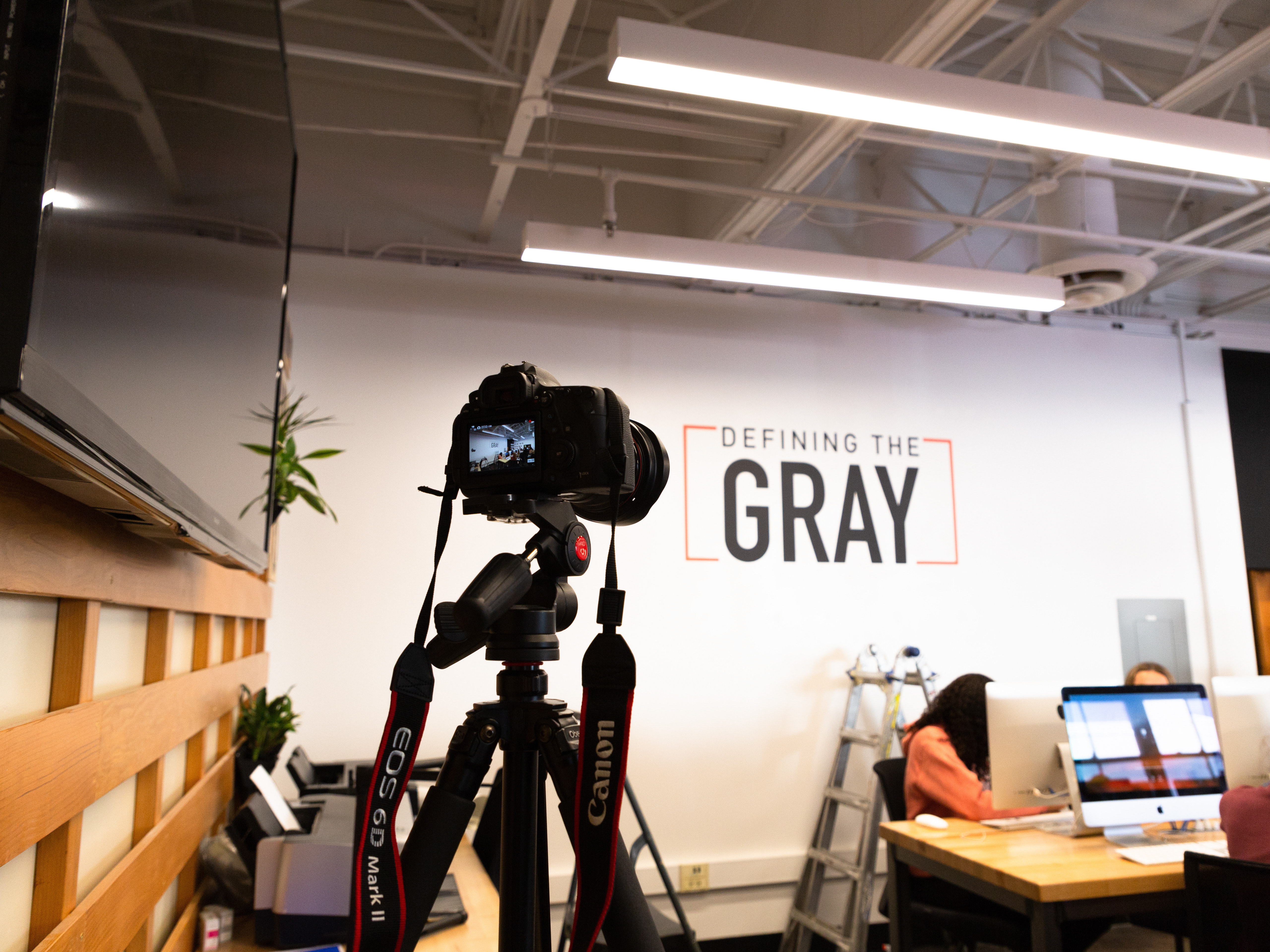Overview
The Huntington Beach High School population is roughly 3000 and has a long and storied tradition spanning over 100 years.
I created and led a design team (hbuhsD21) composed of 9 educators and administrators trying to reimagine the educational experience in high school. We engaged with various stakeholders (students, teachers, counselors, admin, parents, community members) throughout the design process in order to develop actionable solutions that met the individual needs of students while also ensuring district guidelines and mandates were followed.
We made key discoveries surrounding the increasing mental health issues our students were dealing with. This allowed us to intentionally design new opportunities for students that increased time and choice in their educational experience.
The Problem
The data we obtained from the school psychologists illustrated the alarming trend for student wellness but it did not address WHY this was occurring.
Even though there was widespread interest in improving student mental health, we did not have the critical information needed to design solutions that would be effective.
Our first step was to dig deeper to develop a better understanding of the CAUSES.
The Process
Our team set out to identify why mental health was declining while academic performance indicators were increasing. We needed to make sure the school was a place that not only provided learning opportunities but also improved the overall wellness of each and every student.
Research
Since all of the members of the design team worked at the school it was important to be aware of biases and avoid assumptions and pre-determined solutions. In order to address this concern we conducted multiple levels of investigation using a variety of methods.
Shadow a Student
7 members of the design team were paired with 7 students with a range of backgrounds and class schedules. Each design member moved through the bell schedule and sat in on classes observing the student experience.
Interviews with Guidance Counselors
I spoke with the 3 guidance counselors responsible for helping students build their schedules, choose their classes, and create a plan to get accepted into college.
Student Surveys
We conducted a short 5 question survey with 268 students from all 4 grade levels and various academic tiers (Honors, AP, etc.). The goal was to obtain quantitative data focused on time and experience.
Pain Points
NO TIME
• Students don't get enough sleep (5.5 hours on average)
• Students have too much homework (3 hours per night)
NO CHOICE
• No 'middle' option for college path (mainly AP/Honors)
• Impacted schedules/difficult to take electives (very little choice)
• Disconnected (no overlap between classes or student interest)
Student Experience
We developed user personas and journey maps to uncover opportunities and create goals that directly aligned with the needs of students based on their daily experiences in school.
The mental health issues students were dealing with and that we were trying to address impacted all types of kids so it was important to develop personas that ensured our designs would be inclusive of all learners' needs.
"What looks like a person problem is often a situation problem."
- Switch (2010)
Goals
TIME
• More projects with less homework and tests
• Flexible learning
• Cross-curricular courses
CHOICE
• More class options for students
• Classes created from student interest
Ideation
Although the public school system is full of constraints our team made a concerted effort to avoid thinking small or rejecting ideas based on feasibility at the outset. We were committed to powerful solutions, understanding it might require extreme creativity to implement.
Comparative Analysis
Our team visited 3 local schools that are highly rated and in demand by students and parents.
Laguna Beach HS 4CLE:
• Professional learning environment and equipment
• Flexible furniture and scheduling
• Teacher support and empowerment
High Tech High:
• Student Choice
• Integrated/Cross-curricular courses
• Real world projects with an audience
Design 39:
• Themed curriculum (Design Thinking)
• Multi-purpose use of space
• Student empowerment and leadership
Affinity Diagram
We held 3 rounds of brainstorming sessions and created a shared doc to identify common areas to pursue. Some critical concepts:
• 4-year cohort linking 4 core academic subjects
• Hybrid/online class for each student each year
• No homework policy
• 'Majors' (themed) pathways students could choose
Getting Feedback
Given the nature of the project, we needed to include students, teachers, counselors, and administrators to get feedback before developing actual programs. So we presented our concepts to the different stakeholders involved.
Key Concepts:
• Students more interested in themed approach
• Difficult to find teachers willing to co-teach
• Grouping more than 2 classes together almost impossible for master scheduling
• Create for juniors and seniors first (freshmen and sophomores are not ready to choose a focus)
How might we create an environment that values learners' time, interests, and future goals?
Pilot
Timing and logistical considerations influenced the first concepts we tested out with students. Since the master schedule and staffing had already been determined for the following school year it was necessary to implement ideas that could operate within the existing constraints.
Two cohorts of 37 students each were created so that students in both cohorts would have the same history and english teachers.
1:1 devices were provided by the school and all content, projects, resources were put online so that students could access and work from anywhere.
The classes created collaborative projects each quarter that were submitted for credit in both classes.
Findings
The pilot program was run throughout the 10-month school year and evaluated regularly by surveying the students and also getting direct feedback from the teachers involved. This evaluation process revealed some critical findings:
• The English & History curriculum did not integrate enough in order to reduce the workload on students
• Students did not intentionally choose these courses
• Students preferred using their smartphones over the provided Chromebooks
• Many students still struggled with fulfilling their elective art requirement
Iteration
• Create a 'themed' curriculum that students choose based off of personal interest
• Utilize a hybrid/online model to create more flexibility for student schedules
• Embrace student knowledge and interest by incorporating social media
Our student interest list for our new concept quickly became 3x the amount of spots we had available for the program.
The Launch
We adopted two new courses (Examining U.S. History through Art & Social Media Design) and paired them together for students to take simultaneously. We ensured that:
☑️One course was offered online to avoid scheduling conflicts.
☑️ Students intentionally chose the program based off of their own interests
☑️ All projects are integrated to prevent separate assignments and requirements
☑️ Social media and design skills would drive the exploration of content
The Results
We couldn't change the number of classes a student took so we redesigned how many classes it feels like each student is taking. I measured the results of this new educational experience with both quantitative and qualitative metrics. I gathered this information using data from the student Learning Management System (LMS) and from the results of anonymous student surveys.
"I enjoy how we can mix boring history into something that we can create ourselves and express history in our own way."
-Student 1
"The freedom and time we have for each assignment is awesome and allows us to express our creative minds."
-Student 2
"Honestly, this has been my favorite class I've ever taken."
-Student 3
"It's like first hand really learning the material instead of just putting words on a page."
-Student 4
Final Thoughts
"It's the curriculum, stupid!" (see James Carville circa 1992)
Although our journey revealed a number of factors impacting student wellness, adopting new curriculum so that it is more connected with other classes and with student interests can create more choice and time for learners. These two factors are a powerful place to focus on when addressing student mental health.
Next steps:
• Offering more sections/periods
• Incorporating an English class into the program
• Creating a multi-year pathway
• Developing similar programs with different emphases (STEM, Environmental, etc.)


